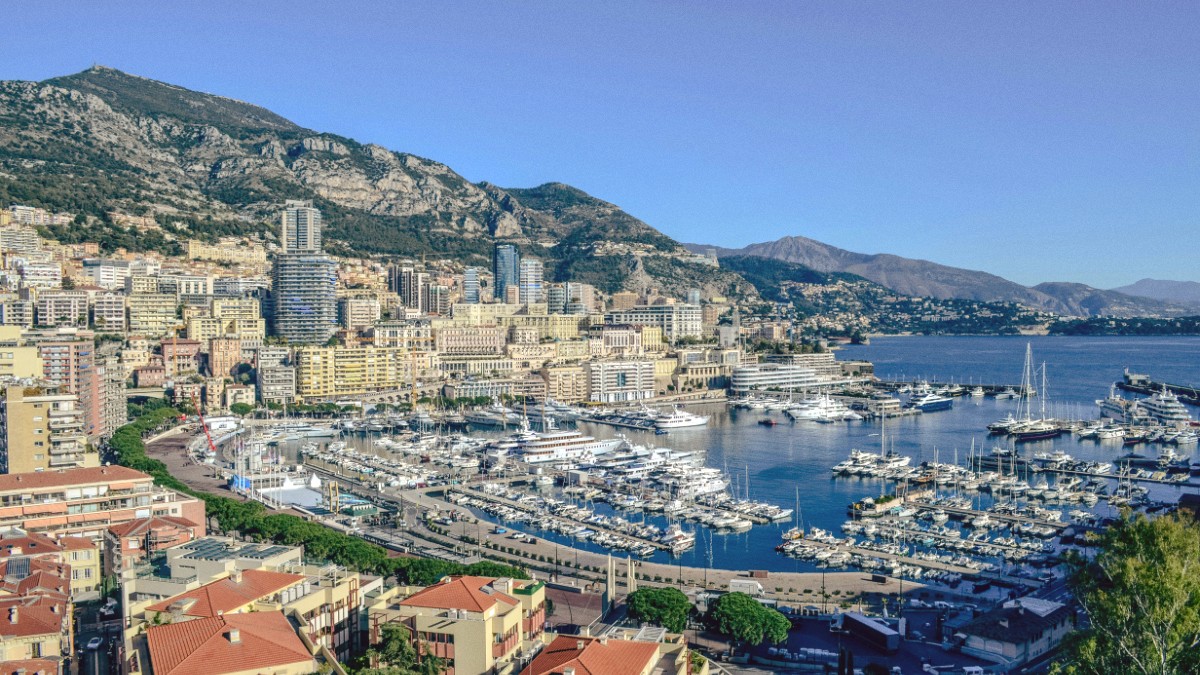
Beyond the glitz, discover a place rich with history, tranquil gardens, and impressive museums. Monaco presents an unique escape, inviting exploration of its many facets. Prepare to encounter a destination that consistently exceeds expectations, showing a different side of Europe. Monaco establishes a standard for refined travel, promising memories that last.
Monaco sits nestled along the stunning French Riviera, on the Mediterranean coast. Its strategic position places it near major cities like Nice, France, and provides access to the broader Côte d'Azur region. Despite its small area, Monaco has varied topography, rising from sea level at its picturesque harbors to significant heights on the "Rock of Monaco."
The hilly landscape called for extensive engineering, creating a network of tunnels, lifts, and escalators that connect different parts of the city. The coastline, though short, includes famous areas like Port Hercule and the Fontvieille marina, both artificial expansions of land reclaimed from the sea. Larvotto Beach, Monaco’s main public beach, is also largely artificial.
Monaco's history traces to ancient times, with early human settlement. The territory's modern story began in 1297, when François Grimaldi, disguised as a Franciscan monk, seized the fortress on the Rock of Monaco. This event marked the beginning of the Grimaldi dynasty's rule, a lineage that continues to govern the principality today. Over centuries, the Grimaldis carefully maintained Monaco's independence through shifting alliances and conflicts with larger European powers.
A pivotal moment in Monaco's transformation occurred in the mid-19th century. The Monte Carlo Casino opened its doors, drawing wealthy visitors from across Europe. This venture, combined with the abolition of direct taxes for residents, transformed Monaco into a playground for the affluent and a financial haven. The arrival of the railway further cemented its status as a premier tourist destination.
François Grimaldi seized the Rock, starting the Grimaldi dynasty.
Monte Carlo Casino development began, sparking economic revival.
Railway links Monaco to the rest of Europe.
Prince Rainier III married Grace Kelly, bringing global attention.
Continual modernization and land reclamation for expansion.
The 20th century saw Monaco continue to modernize and expand, notably through land reclamation projects that added valuable territory. The principality maintained its unique identity and sovereign status, navigating two World Wars and adapting to global economic changes.
The marriage of Prince Rainier III to American actress Grace Kelly in 1956 brought immense international attention and glamour to the small state, further solidifying its image as a destination of elegance and sophistication.
Monaco today remains a proud, independent nation, deeply rooted in its Grimaldi heritage, while constantly innovating to secure its future. The blend of its long, aristocratic past with its modern, luxurious present creates a truly captivating setting for any visitor.
Monaco continues to balance its rich history with ongoing progress, maintaining its distinct allure.
Monaco presents travelers a compact yet diverse array of experiences. This overview details what to anticipate:
An unique opportunity to explore a destination where history, glamour, and natural beauty intertwine seamlessly.
Tiny independent principality on the French Riviera, under 2 sq km.
Constitutional monarchy, Grimaldi family rule. Euro (€).
Mediterranean climate. Official Language: French.
Explore iconic sites and enjoy diverse activities across Monaco's compact landscape.